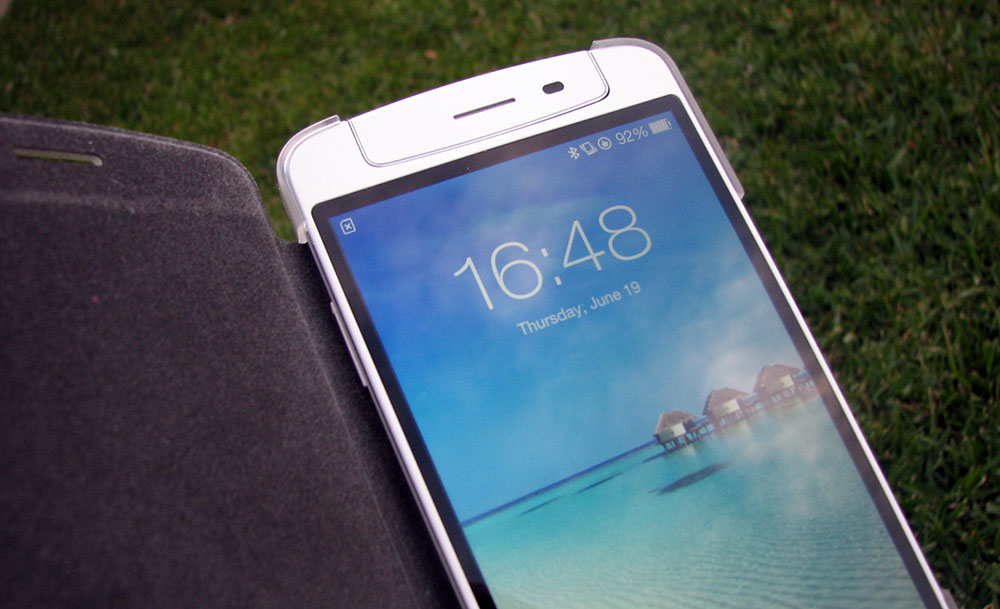
Oppo is one of the ever increasing batch of “nearly there” brands who have some nice hardware, pretty acceptable software. The Oppo N1 is a solid phone which looks great and feels nice in your hand, but can a phone that’s 6 months old with no LTE connectivity at $689 (16GB, Colour OS version of the device) stand up in the current generation of flagship devices?
Does Size Matter?
The market as a whole is very accepting of phones in the 4.7 to 5.2 inch form factor, and sizes above that are met with scepticism and awarded “niche” status. This means that Oppo is hitting a fairly small market with the 5.9-inch N1.
Overall, the phablet market is perhaps bigger than a niche, and that term might do it a disservice. It’s not as strong as the mainstream market for flagship devices. There’s any number of reasons that users may look to the larger form factor device over the accepted 4.7/5.2 inch devices – many cite battery life, increased screen real estate or even failing vision which makes the larger screen very attractive to some users.
Oppo is going up against some tough company in this size. There’s Samsung’s Galaxy Note series, Sony’s Ultra devices and a host of others from other manufacturers. Everyone’s got skin in the phablet game these days, many of them have LTE support and everybody is chasing Samsung’s lead.
It’s a fickle market. We want more functions, bigger screen, better cameras and better battery life but are aghast at the idea of a heavier device. It’s a delicate balancing act, and on first impressions Oppo has walked the line well, even compared to the current flagship of the Phablet market, the Samsung Galaxy Note 3.
- Screen is genuinely outstanding
- Monster battery
- Great quality sound
- Earpiece is too quiet in a noisy environment
- Buttons are slim and often need a second press
- Don’t sit down with it in your pocket
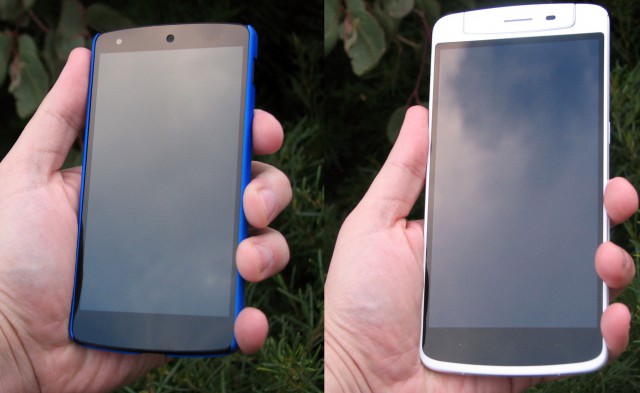
The Hardware
Oppo has put a lot of hardware behind the 5.9 inch screen into the N1, making it fairly large and pretty weighty at 213 grams.
While the phone design is nothing earth shattering, ground breaking or frankly very exciting the team at Oppo have stuck to some basic principles. The shape of the phone is very much as you’d expect, a rectangle with rounded corners. It’s not the thinnest phone you’ll ever see, but a number of manufacturers are focusing on aesthetics over functionality lately.
The N1 has a comically-oversized bezel above the screen that, upon investigation, reveals the phone’s party trick – a rotating 13MP camera with LED flash, allowing you to snap a high res duckface in low light conditions. Just what everyone needs to see, right?
If you’re thinking this is a phone you can use on the run to email, SMS, Viber, Hangout or otherwise engage in instant messaging activities; you’re very, very wrong! The physical size of the phone means you really need two hands to use it unless you’ve significantly larger hands than I.
You’re going to be two-thumb typing too, although the variety of keyboards on Android devices means you’re sure to find one that’ll suit your input needs to go with the way you hold your phone.
Unfortunately that’s not where the size, shape and general design of the phone let it down. The included flip case, while well-designed and good-looking, is likely to prevent people who prefer to use their phone in their left hand only from doing so due to the spine on the case and the roll that it creates in your hand.
There are really no surprises with the N1 when it comes to port placement – Oppo has stuck with the convention mostly agreed-on by other manufacturers and placed the power and volume buttons along the right edge. The USB port is on the bottom of the device, slightly left of center.
The 3.5mm headphone jack is just off to the left of the USB port, once again opening up the discussion/argument over whether the headphone jack should be on the top or bottom of the phone — thanks, guys!
The N1 is a sealed unit – you can’t remove the back and replace the battery, which means the SIM slot is a pop out tray. Personally I don’t like these, but they are increasingly popular with a number of manufacturers, particularly on sealed and IP-rated devices.
Screen
Leaving anything else you may or may not like about this phone aside, the screen is pretty special. It’s a 5.9-inch 1080p IPS screen. That’s a densely-packed 377 ppi, and numbers don’t do it justice.
The colour reproduction on the screen and the video playback is probably one of the best I’ve seen on a phone at least in quite some time, yes; even going toe to toe with the latest flagships from both HTC and Samsung.
Battery Life
The N1’s 3610 mAh battery is a monster, there’s no two ways about it. The phone lasted through the day for me, even when I was being deliberately battery-hungry (screen brightness set to full, streaming music and videos all day, using social media heavily and taking lots of photos). It’s an impressive outcome from a “no-name” manufacturer, and shows the big names how to go about delivering a full day of use to their customers.
The drawback of having the monster battery is weight, and lots of it. The N1 weighs 213 grams, significantly heavier than a Galaxy S5 at 145 grams (it’s around half that weight again).
In an already large and relatively heavy device, you could argue that some extra weight makes no difference as it gets spread over the larger face of the device. Others would say there’s enough weight already – make up your own mind on that one.
Sound
The N1 is pretty capable when it comes to sound. During testing, I streamed Play Music for a significant time during the day there were no issues with the quality of playback. Compared to a couple of other devices I’ve used recently, the bass was a little flat when using the same headset, but that really is picking for the sake of picking.
One thing that gives me pause regarding the N1’s sound capabilities though is that the earpiece volume during phone calls is just not loud enough, especially if you’re in a noisy environment. At full volume I struggled to hear people I was talking to over anything more than ambient noise. Walking down the street with cars passing by, a noisy cafe or even public transport are all out.
Performance
Particularly for a device that falls into the “phablet” bracket, the N1 performance needs to be spot on, if your phone lags slightly from time to time that’s acceptable but theres much less acceptance of performance issues for tablets and (by proxy) Phablets.
The N1 didn’t disappoint – it has a Snapdragon 600 at its core which is complemented well by the Adreno 320 GPU and 2GB of RAM on the device. It’s not bleeding edge stuff but it’s still some pretty snappy hardware, and I didn’t notice any major issues with performance.
O-Click Remote
Oppo also has a Bluetooth-connected remote called the O-Click. It can be attached to your keychain and offers two very useful function when you’re within about 50 meters of your phone.
The first is to be able to trigger the camera to take a photo, pretty obvious one there! The second and possibly more useful feature is to set off an alarm on your phone so you can find it when you misplace it.
O-Touch Panel
Another of the N1’s party tricks is that it has a touch panel on the rear, somewhat like the Sony PS Vita. The idea is to keep the screen free of clutter and keep your hands off it by using the rear touch panel to navigate and perform basic functions. The execution isn’t quite there, though.
It’s certainly a great idea, but I found the time it took to adjust to using the rear touch panel was too great, especially in my limited time with the review unit. I found myself accidentally taking photos or scrolling pages when I didn’t want to.
If the O-Touch panel is meant to be intuitive and help users use the phone, then Oppo has missed the mark with the steep learning curve. This is likely to be relegated to “gimmick” status pretty fast.
What’s missing?
Let’s talk about omissions in the build of this for a minute and put it into perspective. As I’ve already mentioned earlier in this review, there’s no LTE. For some users that’s going to be a deal-breaker on the spot while for others it may not be such a problem – a desk jockey like myself spends most of their time on Wi-Fi and doesn’t need the speeds afforded by LTE. If I’m not on Wi-Fi, I’m probably either driving or don’t actually care how quick my data is because I’m busy and not using my phone so as long as my email comes through I’m good.
The other is a real convenience thats missing for my mind, is wireless charging. It’s not a deal-breaker, but when you’re used to the convenience of just dropping your phone on a charging pad and picking it up when it rings losing that option is somewhat a frustration.
Camera
This really is the ultimate party trick for a mobile phone – a high res, flash-capable selfie camera. What more could anyone want right? Actually, not a lot since the camera is actually very capable. The resolution is very good, the light capture is clean and the colour is (for a mobile device at least) quite accurate.
The mechanic behind rotating the camera is simple and very easy to achieve, just roll it towards yourself anywhere through the 206 degree rotation capability from the top center of the device until you hit the stops that are built in. The problem that I see in the future is that there are going to be a number of N1 owners trying to claim warranty on their phone because the connectors aren’t working anymore due to lots of rotating for a sneaky selfie, or high potential for an breakage if your not-so-gentle kids get their hands on the phone.
Like most of the phones that are available in the market, there’s multiple shooting modes available on the N1 camera which are all designed around getting the best picture for the conditions without necessarily relying on the user understanding the various modes.
Normal, Panorama, High Speed, Beautify, and Slow Shutter are all in the camera modes which is great but what does it mean for users?
Pretty much exactly what you would expect; Normal is a normal shooting mode, High speed is your “action shots”, Beautify gives some filtering to enhance colours and images and finally Slow Shutter is for night pictures where a longer exposure is necessary to get a good picture.
There’s no fancy tricks or confusing multi-level menus here, it’s as near to a WYSIWYG menu system as you’ll get on a mobile camera.
Software
Android and Color OS
The apparent “no fluff” approach to a customised version of Android from Oppo (Colour OS) brings a fresh and clean, Nexus type feeling to the phone. There’s little by way of pre-installed software outside the Google Apps suite.
Running Android 4.2 out of the box really shouldn’t be a surprise to anyone and while there are murmurs of updates “in the pipeline” it’s difficult to see it happening particularly quickly. This isn’t a direct shot at Oppo, it’s an unfortunate fact for the smaller manufacturers who just don’t have the disposable manpower that the Samsungs, HTCs and Apples of the world do.
One thing that this phone has done for me is rekindled my love of some apps I haven’t used in a while due to the simplicity of the app, the fact that there aren’t pre-installed alternatives and the really nice presentation on the device.
CyanogenMod
While you can buy an N1 with CyanogenMod preinstalled, you can also install it yourself.
I’ve gone from Colour OS to Cyanogen and back again in the time I’ve had the phone and found no real discernible difference in the performance of the device, only some of the behaviours that the phone gives to the user.
You gain a bit and you lose a bit when you move to CyanogenMod – some of the functions that are optimised for the phone disappear, but you also gain the customisation that you only get with a custom ROM.
Perhaps the biggest gain might be that CyanogenMod is based on a much newer version of Android than Oppo’s official Color OS ROM, and for that reason alone I’d probably be inclined to stick with it. If having the latest software isn’t that important to you though, you won’t find you’re missing much if you move back to Color OS.
As longtime user, I found a lot of comfort in CyanogenMod on the N1 and really enjoyed and frankly preferred it to Color OS.
Oppo N1
- 5.9″ IPS Screen, 1920 x 1080 – 377 PPI
- 1.7 GHz Qualcomm Snapdragon 600 Quad Core
- 2GB RAM
- 16/32GB Onboard Storage
- 13MP rotating camera
- Radios:
- GSM: 850/900/1800/1900 MHz
- WCDMA: 850/900/1700/1900/2100 MHz
- 4G LTE: None
- 3610mAh battery
- Android 4.2 Jelly Bean
- 802.11 a/b/g/n Wifi
- Bluetooth 4.0
- MicroHDMI output
Buy it now
The Oppo N1 is available in 16GB ($689) and 32GB ($749) variants from Yatango Shopping, who kindly supplied this model for review.
The short story is that the Oppo N1 is a really nice device. It features some classic styling, except for the rotating camera party trick. There are however potential deal-breaking points that some users simply won’t be able to overcome.
The top bezel is comically large due to the space around the rotating camera. Adding that extra size on an already physically-large device is likely to turn away some prospective customers. Another omission is the fact there’s no LTE, and it’s an omission that Oppo may come to regret for large metropolitan areas.
Conversely, the screen is stunning. With the rapid progression of screen technology over the last couple of years this is still easily one of the best I’ve used on a large-screen device of late. The screen size isn’t enough to kill the battery – a unique feat, and even the heaviest of users will struggle to kill the battery in a single day.
Will I buy one? No. The N1 isn’t a device that fits in my life at the moment. If I want a tablet I’ve got my Nexus 7 in my bag, and if I want a phone I’ll take my phone out of my pocket. I think a 5.5-inch screen is about my limit for functionality on a phone, and I’m still too infatuated by my Nexus 7 to bench it in favour of a phablet.
Then there’s the price. The N1 is a nice device, there are devices with similar or better specs out in the same form factor. It’s making its way into a crowded area of the market, and at $689 has probably already seen its best days. The CyanogenMod version of the phone has paved the way for the upcoming One Plus One by gauging market reaction to a phone sold running CyanogenMod “out of the box”, and interest in the device has been good.
If you’re looking for a large phone/phablet, the Oppo N1 would have to figure in your shopping list as long as updated software, LTE carrier support and the upfront cost of the device aren’t deal-breakers for you.


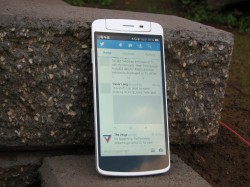


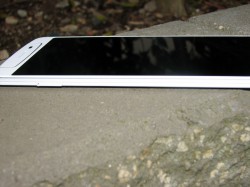













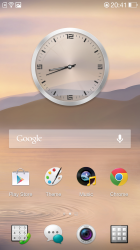
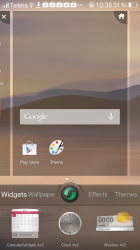
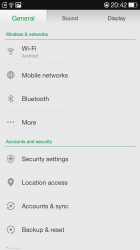

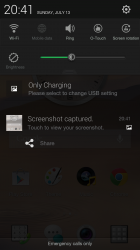
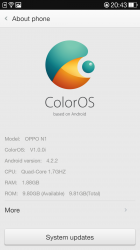
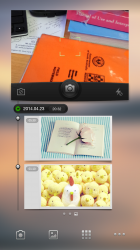
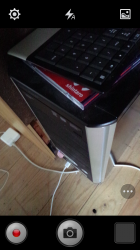
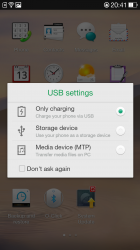
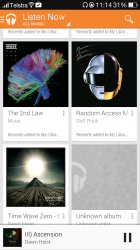
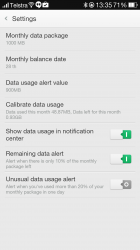





Thanks for the detailed review, Phil.
🙂
If Oppo did a version of the N1, with microSD support, I’d seriously think about nabbing one, even without it having LTE support.